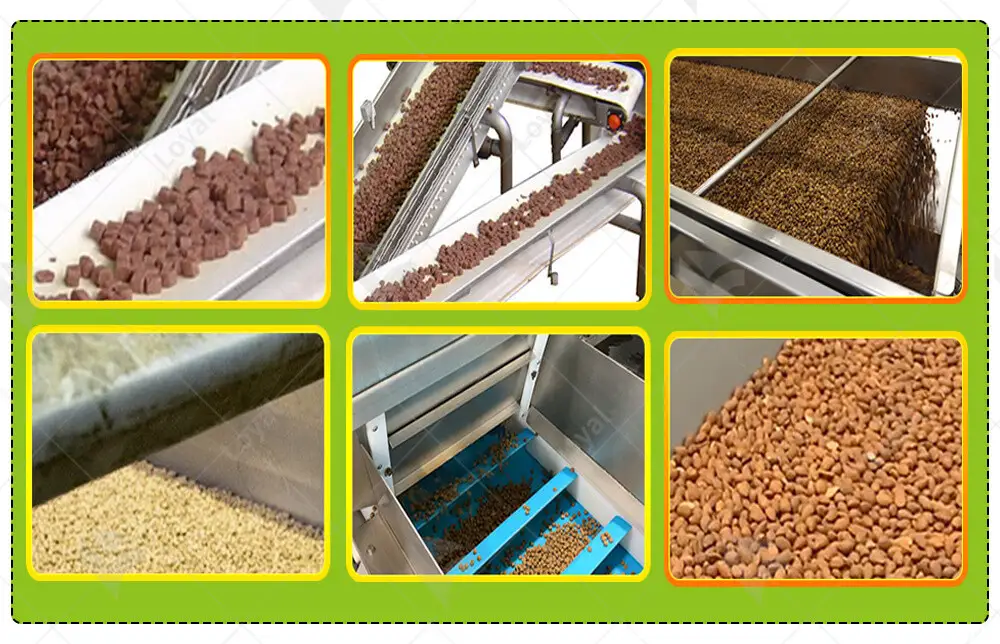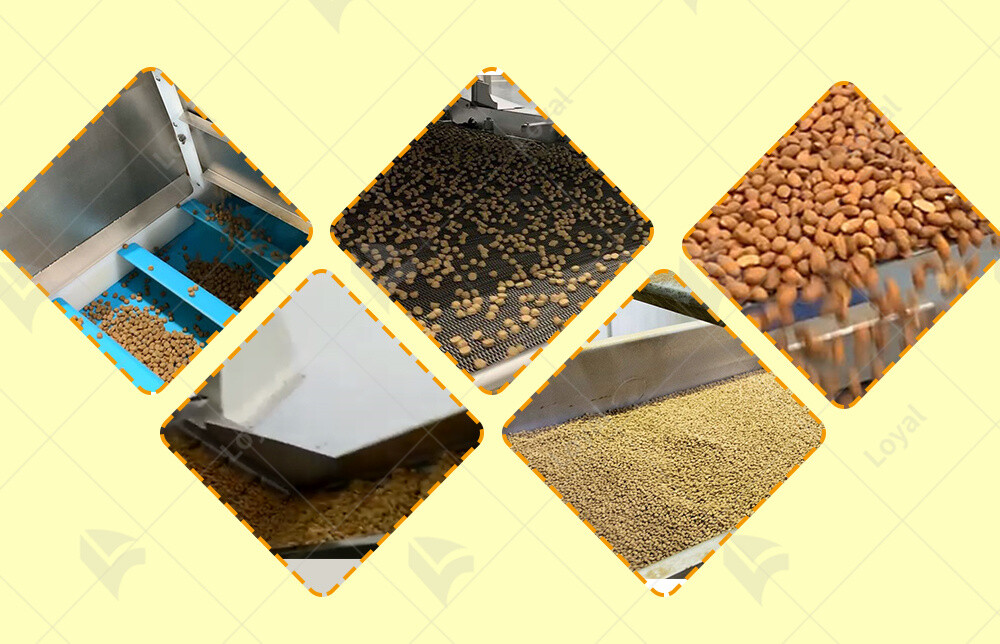Discovering The World Of dog food manufacturing
Introduction to Sustainability in Dog Food Manufacturing
In the dynamic world of dog food manufacturing, sustainability has emerged as a pivotal force driving innovation and progress. As consumers become increasingly aware of the environmental impact of their choices, the demand for eco-friendly dog food products has skyrocketed. This shift in market demand has prompted manufacturers to reevaluate their production processes and incorporate sustainable practices into every aspect of dog food manufacturing.
Sustainability in dog food manufacturing is not a new concept but has gained significant momentum in recent years. It involves a holistic approach that considers the environmental, economic, and social impacts of production practices. From sourcing raw materials responsibly to optimizing production processes to minimize waste and energy use, manufacturers are adopting a range of strategies to reduce their carbon footprint and contribute to a more sustainable future.
One of the key challenges in achieving sustainability in dog food manufacturing lies in the complex nature of the supply chain. Raw materials such as meat, grains, and vegetables often come from various sources, each with its own environmental and social implications. To address this, manufacturers are increasingly focusing on sourcing ingredients from sustainable and ethical suppliers. This includes working with farmers who employ sustainable farming practices, such as crop rotation and reduced pesticide use, and ensuring that animal welfare standards are met throughout the supply chain.
In addition to sourcing ingredients responsibly, dog food manufacturers are also investing in advanced food machinery and technology to optimize production processes. By adopting energy-efficient equipment and implementing lean manufacturing techniques, manufacturers can significantly reduce waste and energy use throughout the production cycle. For instance, the use of automated cutting and mixing machines ensures precise ingredient measurement and reduces the risk of over-production, thereby minimizing food waste. Similarly, the integration of smart sensors and data analytics enables manufacturers to monitor and optimize energy consumption in real-time, leading to significant energy savings.
Furthermore, sustainability in dog food manufacturing extends beyond the production process itself. Packaging plays a crucial role in the environmental impact of dog food products, and manufacturers are increasingly exploring eco-friendly packaging solutions. From biodegradable materials to recyclable packaging options, manufacturers are striving to reduce the environmental footprint of their products from cradle to grave.
In conclusion, sustainability has become a central focus in modern dog food manufacturing, driven by consumer demand, regulatory pressure, and the industry's own recognition of the need for change. By adopting responsible sourcing practices, investing in advanced food machinery and technology, and exploring eco-friendly packaging solutions, manufacturers are taking strides towards creating a more sustainable dog food industry. As we continue to explore the various aspects of sustainability in dog food manufacturing, it is clear that the journey towards a greener future is both exciting and necessary.

Reducing Waste in Dog Food Manufacturing
In the ever-evolving landscape of dog food manufacturing, sustainability has emerged as a pivotal guiding principle.One of the most critical areas where sustainability can be achieved is in reducing waste. This not only aligns with the broader goal of environmental conservation but also optimizes production efficiency and enhances the overall quality of dog food products.
Efficient Raw Material Utilization | At the heart of reducing waste in dog food manufacturing lies the efficient utilization of raw materials. Manufacturers must meticulously source high-quality ingredients that are both nutritious and sustainable. By selecting ingredients that minimize by-products and waste, the initial stage of production is already optimized for sustainability. Advanced food processing machinery plays a crucial role here, ensuring that ingredients are precisely measured, mixed, and processed to reduce overuse and spillage. This not only conserves resources but also contributes to cost savings and a reduced environmental footprint. |
Optimizing Production Processes | The next step in reducing waste involves optimizing production processes. This begins with the adoption of automation and robotics, which have revolutionized dog food manufacturing. Automated machinery ensures consistent and accurate ingredient handling, mixing, and formulation, minimizing human error and reducing the risk of over-processing or under-utilization of raw materials. Additionally, advanced machinery can be programmed to produce specific shapes and sizes of kibbles, reducing the need for secondary processing and trimming, which often generates waste. |
Implementing Waste Reduction Technologies | Manufacturers must also look towards innovative technologies that specifically address waste reduction. For instance, the use of by-product recycling systems can transform waste materials into valuable resources. These systems can process waste ingredients or packaging materials, repurposing them into new raw materials or energy sources. Furthermore, the integration of food waste composting systems within manufacturing facilities can convert organic waste into nutrient-rich compost, which can be used in agricultural practices or sold as a value-added product. |
Efficient Raw Material Utilization | At the heart of reducing waste in dog food manufacturing lies the efficient utilization of raw materials. Manufacturers must meticulously source high-quality ingredients that are both nutritious and sustainable. By selecting ingredients that minimize by-products and waste, the initial stage of production is already optimized for sustainability. Advanced food processing machinery plays a crucial role here, ensuring that ingredients are precisely measured, mixed, and processed to reduce overuse and spillage. This not only conserves resources but also contributes to cost savings and a reduced environmental footprint. |
Optimizing Production Processes | The next step in reducing waste involves optimizing production processes. This begins with the adoption of automation and robotics, which have revolutionized dog food manufacturing. Automated machinery ensures consistent and accurate ingredient handling, mixing, and formulation, minimizing human error and reducing the risk of over-processing or under-utilization of raw materials. Additionally, advanced machinery can be programmed to produce specific shapes and sizes of kibbles, reducing the need for secondary processing and trimming, which often generates waste. |

Energy Efficiency in Dog Food Manufacturing
In the dynamic world of dog food manufacturing, sustainability is not an option but a necessity.This focus on energy efficiency not only aligns with the global drive towards environmental stewardship but also enhances the competitiveness and profitability of dog food manufacturers.
The Significance of Energy Efficiency | Energy efficiency in dog food manufacturing is crucial for several reasons. Firstly, it reduces the operational costs associated with energy consumption, leading to significant savings for manufacturers. Secondly, it minimizes greenhouse gas emissions, contributing to a healthier planet. Lastly, energy-efficient practices foster a culture of continuous improvement, encouraging manufacturers to innovate and adopt new technologies that further enhance sustainability. |
Advanced Machinery and Equipment | Modern dog food manufacturing relies heavily on advanced machinery and equipment to achieve energy efficiency. For instance, high-efficiency extruders and mixers utilize less energy while ensuring optimal mixing and extrusion of raw materials. Similarly, automated conveyor systems streamline the production process, reducing the need for manual handling and, consequently, lowering energy consumption. Additionally, energy-efficient lighting and HVAC systems contribute to an overall reduction in energy use within manufacturing facilities. |
Optimizing Production Processes | Beyond machinery and equipment, optimizing production processes is another key strategy for achieving energy efficiency in dog food manufacturing. This includes implementing lean manufacturing principles, which focus on eliminating waste and maximizing efficiency. Manufacturers can also adopt batch processing techniques, which allow for more precise control over energy use and raw material utilization. Furthermore, regular maintenance and upgrading of machinery can ensure that it operates at peak efficiency, reducing energy consumption and extending the equipment's lifespan. |
Implementing Energy-Efficient Technologies | Achieving energy efficiency in dog food manufacturing requires the adoption of cutting-edge technologies and practices. One key area is the use of energy-efficient machinery and equipment. Modern extruders, mixers, and conveyors are designed to minimize energy consumption while maintaining high production standards. For instance, advanced extruder technologies utilize less energy and produce fewer by-products, contributing to both energy efficiency and waste reduction. |
In conclusion, reducing waste is a vital aspect of sustainable dog food manufacturing practices. By utilizing by-products, improving packaging, applying lean manufacturing principles, segregating and recycling waste, and utilizing real-time monitoring systems, manufacturers can significantly cut down on waste production. These efforts contribute to environmental sustainability, conserve resources, and enhance the economic viability of manufacturing operations. Stay tuned for the next segment, where we will explore additional strategies for achieving sustainability in dog food manufacturing, focusing on water conservation and recycling initiatives.

Sustainable Packaging Solutions
In the dynamic world of dog food manufacturing, sustainability is not merely an option but a necessitySustainable packaging solutions are now a cornerstone of modern dog food manufacturing, playing a pivotal role in reducing waste and energy use.
Traditional packaging methods for dog food often involve the use of non-renewable materials such as plastic and aluminum. These materials not only contribute to landfill waste but also require significant energy to produce and transport. In contrast, sustainable packaging solutions focus on using renewable, biodegradable, or recyclable materials. By doing so, manufacturers can significantly reduce their environmental footprint while still ensuring the safety and shelf life of their products.
One of the most effective sustainable packaging solutions for dog food manufacturing is the use of biodegradable materials. These materials, such as paper, cardboard, and plant-based plastics, can be easily composted or broken down in the natural environment. They offer a viable alternative to traditional plastics, which can take hundreds of years to decompose. By adopting biodegradable packaging, dog food manufacturers can demonstrate a clear commitment to reducing waste and promoting a more sustainable future.
In addition to biodegradable materials, recyclable packaging is also gaining traction in the dog food industry. Manufacturers are increasingly using materials that can be easily recycled, such as glass, metal, and certain types of plastics. By encouraging consumers to recycle their dog food packaging, manufacturers can further reduce waste and promote a circular economy.
Moreover, sustainable packaging solutions often involve optimizing packaging design to minimize material usage. This can be achieved through the use of advanced packaging machinery and techniques, such as vacuum packaging, which reduces the amount of air in the package and thereby the amount of packaging material required. Other methods include using lighter materials, integrating multi-functional layers, and designing packaging that can be easily disassembled for recycling.
Dog owners are increasingly looking for brands that demonstrate a commitment to sustainability, and manufacturers that prioritize eco-friendly packaging can gain a competitive advantage in the market.

Reference
The following are five authoritative foreign literature websites in the field of Industrial food machinery:
1. Food Engineering Magazine
Website: https://www.foodengineeringmag.com/
2.Food Processing Magazine
Website: https://www.foodprocessing.com/
3.Journal of Food Engineering
Website:https://www.journals.elsevier.com/journal-of-food-engineering
4. Food Manufacturing Magazine
Website:https://www.foodmanufacturing.com/
5. International Journal of Food Science & Technology
Website:https://onlinelibrary.wiley.com/












